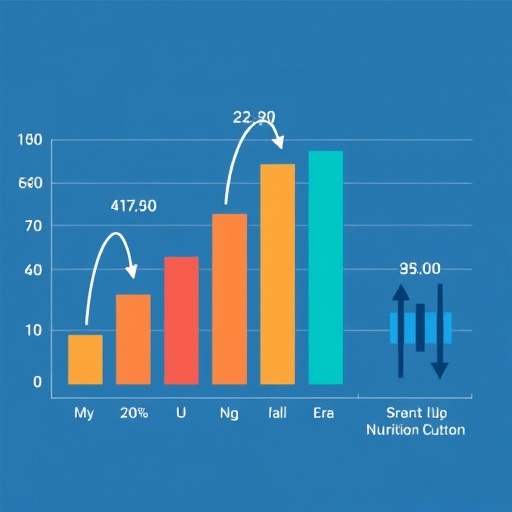The increasing prevalence of idiopathic pulmonary fibrosis (IPF) presents significant challenges for healthcare providers and researchers alike. This progressive lung disease is marked by relentless scarring of the lung tissue, leading to severe respiratory impairment and, ultimately, mortality. Given its complex nature, a growing body of research aims to identify reliable indicators that can forecast acute exacerbations and mortality risks in patients suffering from IPF. One of the most promising avenues focuses on the Geriatric Nutrition Risk Index (GNRI), which has recently gained attention as a potential predictive tool.
The GNRI is a scoring system initially developed to assess the nutritional status of elderly patients, particularly in a geriatric setting. The index utilizes simple clinical parameters such as weight, height, and serum albumin levels to derive a score that indicates nutritional risk. This tool is particularly invaluable in a population where malnutrition prevalent and can have dire consequences on overall health outcomes. As IPF often affects older adults, its application in this population becomes particularly pertinent.
Recent research has unveiled a significant correlation between the GNRI and clinical outcomes in patients with IPF. Specifically, clinicians are observing that lower GNRI scores are associated with increased rates of acute exacerbation, a sudden worsening of symptoms that can lead to hospitalization. This exacerbation is often accompanied by acute respiratory failure, contributing to the increased mortality seen in this cohort. Thus, the GNRI offers a dual role; not only does it provide insights into nutrition, but it also serves as an indicator of the patient’s risk profile concerning their pulmonary condition.
Understanding the pathways through which malnutrition affects patients with IPF can elucidate why GNRI is an essential tool. Malnutrition can lead to decreased muscle mass, impaired immune response, and overall reduced physical strength, all of which are vital in combating chronic respiratory diseases. Additionally, low nutritional status can lead to impaired lung function, increasing susceptibility to infections and exacerbations. Therefore, a holistic approach that considers both nutritional and pulmonary health may significantly improve patient outcomes.
Interestingly, the GNRI’s ease of assessment and correlation with various adverse health outcomes has prompted calls for its integration into routine clinical practice for patients with IPF. By adopting the GNRI as a standard tool in assessing patients’ nutritional status, clinicians can develop targeted intervention strategies aimed at mitigating acute exacerbations. This proactive approach can transform the management of IPF, leading to improved quality of life and potentially prolonging survival.
Furthermore, recent findings suggest that monitoring nutritional status through the GNRI over time may allow healthcare providers to identify changes in a patient’s risk profile. As treatment regimens evolve and the progression of IPF varies among individuals, continuous assessment of nutrition risk could enable more personalized treatment plans. This adaptability becomes vital as it is increasingly recognized that one-size-fits-all approaches may not be effective in managing chronic diseases like IPF.
In addressing the broader implications of these findings, it is critical to consider how public health initiatives can promote awareness around the intersections of nutrition and chronic respiratory diseases. Programs aimed at educating patients, caregivers, and healthcare providers about the importance of proper nutrition in disease management could yield significant benefits. As findings emerge highlighting the importance of nutritional status, a shift in clinical priorities may be warranted.
The landscape of research surrounding the GNRI and its implications for patients with IPF is rapidly evolving. Ongoing studies will likely seek to confirm these preliminary findings, ensuring that the role of nutritional assessment tools is well-established in existing literature. As researchers continue to delve into the biological mechanisms underpinning the relationship between nutrition and pulmonary health, we can anticipate more comprehensive care models tailored for patients with chronic lung conditions.
Moreover, the potential for utilizing GNRI data in clinical trials cannot be overlooked. Pharmaceutical companies and research institutions may increasingly focus on patient populations defined by their nutritional risk scores, refining inclusion criteria for studies exploring new therapies. This could yield more applicable results, as interventions may be tailored to address the unique challenges faced by variably malnourished patients.
In conclusion, the research highlighting the Geriatric Nutrition Risk Index as a predictor of acute exacerbation and mortality risk in IPF patients ushers in a new era of understanding and managing this complex disease. Emphasizing a multidisciplinary strategy will empower healthcare providers and patients, ultimately leading to better health outcomes. The integration of nutritional assessments into routine clinical evaluations offers a promising avenue towards enhanced prognostic accuracy and individualized care, making strides in the ongoing battle against idiopathic pulmonary fibrosis.
As this research garners attention, potential collaborative efforts between nutritionists, pulmonologists, and geriatric specialists could emerge to create comprehensive management programs. Addressing both the nutritional and respiratory needs of patients may become the gold standard in IPF care, potentially revolutionizing the approach towards this challenging condition.
Subject of Research: The relationship between Geriatric Nutrition Risk Index and acute exacerbation and mortality risk in patients with idiopathic pulmonary fibrosis.
Article Title: Geriatric nutrition risk index as an indicator of acute exacerbation and mortality risk in patients with idiopathic pulmonary fibrosis.
Article References:
Pınar Deniz, P., Hanta, İ., Duru Çetinkaya, P. et al. Geriatric nutrition risk index as an indicator of acute exacerbation and mortality risk in patients with idiopathic pulmonary fibrosis.
BMC Geriatr 25, 731 (2025). https://doi.org/10.1186/s12877-025-06377-8
Image Credits: AI Generated
DOI: 10.1186/s12877-025-06377-8
Keywords: Idiopathic pulmonary fibrosis, Geriatric Nutrition Risk Index, acute exacerbations, mortality risk, nutrition, respiratory health.




